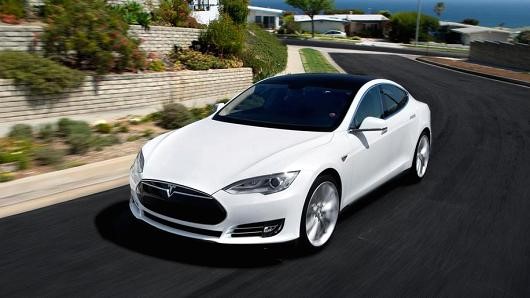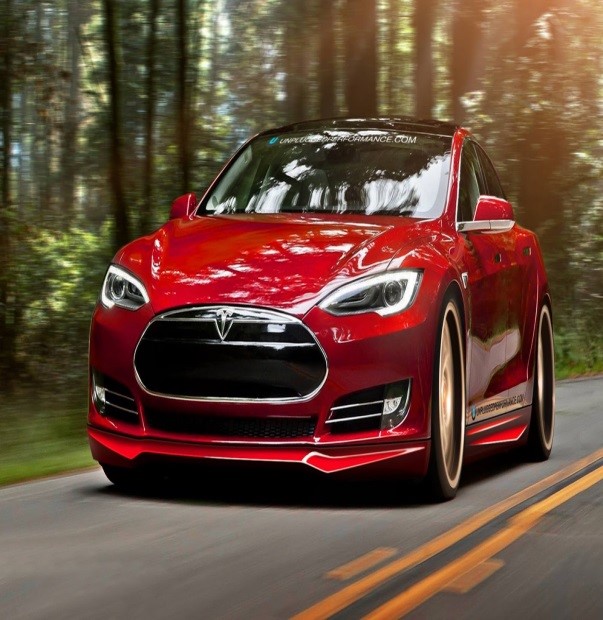The survival circuit is designed to solve problems relating to survival. For example, our ancestors developed a preference towards foods which had a high sugar and fat content since they needed a quick release of energy as hunter-gatherers (Mohaidin, 2012). This preference has certainly been passed onto our generations, even though food with high sugar and fat content are now pejoratively considered to be unhealthy (although they are still viewed as a fast release of energy), although we still display a preference for sweet food over others (Meiselman, 1977). Furthermore, Logue (1998) mentions that even a newborn infant, without any prior breast or bottle feeding, shows an acceptance towards their first response of tasting anything sweet, suggesting that humans have an innate preference for sweet food. Furthermore, the Department for Environment, Food & Rural Affairs (2013) conjecture that purchases of foods & drinks high in fat and/or sugar exceeded recommendation of 8% by 14 – 15% in 2013, accurately displaying the effect it can have on consumer behaviour. However, humans’ preference toward spicy food is not something which can be explained and rationalised by natural selection. Even though some of the spice contains antimicrobial properties, ancestors still chose not to eat spicy foods such as chilli. “Spicy” is known to be a sensation or pain rather than an actual modality of taste as it activates pain receptors, meaning that it is maladaptive for humans to show preference toward it, which possibly explains why some people cannot handle spicy foods (Caterina, 1997). Furthermore, Rozin et al. (1979) conjecture that no other animals show preference toward such taste, even after an effort to condition rats to show preference. Thus, such a preference seems to be a trait which has been derived through culture rather than natural selection, again supporting the argument that consumer behaviour can be influenced or even overridden by cultural factors.
The kinship circuit is designed to solve problems relating to family and kin. Saad et al. (2000) speculates that individuals can maximise their fitness by either promoting their own fitness or promoting the reproductive success of genetic relatives, a phenomenon which is known as inclusive fitness. This theoretically explains the altruistic behaviour in humans such as parental investment to increase the reproductive fitness of the next generation. Shackelford et al. (2004) theorises that by making the contentious statement that residence with a step-parent is the single best predictor of child abuse and neglect as they gain no direct genetic benefit by investing in them, which although surprising, actually conforms to the adage ‘that blood is thicker than water’. Therefore, inclusive fitness explains that, households where the parents and children are biologically related are more likely to invest in their children financially, mentally and emotionally (Hoffereth et al., 2001). However, if humans are innately driven to promote their genetic relatives to increase the chance of survivability of their genes, then adoption would not exist. Not only that adoption can be seen as maladaptive according to evolutionary psychology, but also Gibson (2009) discovered that unlike step-parental households, in a household with a genetically related child and adoptive child, parental investment was biased toward adoptees. They were actually more likely to be provided with preschool, private tutoring, cars and rent compared to genetically related children, possibly driven by a desire to make them feel accommodated for and not let them feel inferior to their genetically related counterparts. This certainly reveals that in contemporary society, consumer behaviour cannot be generalised and subsequently it cannot be assumed that a household with genetically related children will always invest more than those with adoptive children.
The reciprocation circuit has the function of solving problems pertaining to survival in a social group and is concerned primarily with the management of social exchanges. Unlike the kinship circuit where one helps those genetically related to them to increase the chances of the survival of relatives’ genes and their bloodline staying intact, reciprocation altruism, a term coined by Trivers (1971), refers to the human’s act of helping non-biologically related others with the expectation of altruistic acts in return. Such a trait has been derived from our ancestors’ acts of increasing the average fitness of the group through acts like sharing food. Reciprocation altruism can be used to explain gift-giving cultures, especially during festivals like Christmas where one gives a gift to another with the expectation of receiving a gift in return (Saad, 2007). Furthermore, men are also likely to give a gift to a member of the opposite sex to indicate affluence and possibly power, thereby eliciting a favourable impression of themselves to increase their chance of having sexual intercourse with that female (Saad et al., 2000). However, there is still the question of why people conduct altruistic acts and display compassion towards strangers who cannot reciprocate and give anything in return. Miller (2010) emanates that such acts can be explain by the fact that charity is an overt indicator of one displaying a high level of resources or power. Hence, charity can be used to increase the giver’s social status, moral prestige, family honor, and group reputation which can feasibly subsequently increase their chance of reproduction.
The reproductive circuit is designed to solve problems pertaining to reproduction and is the evolutionary source of differences between the sexes. Kanazawa (2003) hypothesizes that men prefer young and attractive women as it shows an indication of health and fertility, whereas female are more inclined towards wealthy and powerful men as it is an indicator of a high level of resources available to invest in the offspring. Such preferences seem to be justified when examining the stereotypical female devotion toward improving her appearance, through cosmetics or going on a diet, both of which are consumed more frequently by women than men (Carducci, 2009). Moreover, Sundie et al. (2010) mentions a link between mating motives and men’s conspicuous consumption of luxurious products such as Porsche as an overt mating signal. However, natural selection does not fully explain and clarify consumer behaviour of certain products or service. For example, although it is true that cosmetic products are designed to help women exude vitality and youth, thus indicating a higher level of health to males, cosmetic and surgical procedures such as breast enlargement shows no indication of the higher survival rate even though it has been the most frequent procedure since 2006 (ASPS, 2013). Large breasts are superfluous, but like a peacock’s tail, and actually decrease survival rate by limiting one’s mobility. Consequently, such consumption behaviour can only be explained by the Fisherian view of sexual selection where traits are passed on purely due to the opposite sex’s preference as men may prefer women with larger breasts (due to primal instincts) (Andersson, 1994) or it could simply because of vanity and increasing one’s self-esteem.
Natural selection plays a significant role in explaining consumer behaviours. However, there are some behaviours which cannot be fully explained by natural selection, such as a preference toward spicy food, which could be attributed to cultural reasons. Therefore, to gain a true understanding of consumer behaviour, cultural affects and natural selection should be scrutinized adjacent to each other.
Examine the psychological factors that effect consumer behaviour Tesla considers when advertising their products
Conspicuous consumption is a method for consumers to consume certain products to make a statement about themselves, normally to enhance their prestige or portray an idealised sense of self to others. Natural selection explains such consumer behaviour by enunciating that it can actually allow individuals to accentuate their social status and achieve prestige. To show the effects of this, Tesla Motors (a luxury car company that sells all-electric vehicles, which takes its name from the notable engineer Nikola Tesla) is the chosen brand for this case study. The following campaign is designed with an assumption that Tesla has released their new models of car (Tesla Model 3) to the mass market. The price of the vehicle ranges between £19,000 – £29,000 and targets young adults (i.e. 17-25) from middle class families, which reflects the affluent nature of the target audience.

The advertisement begins with an overall view of prestigious universities. The rationale for choosing university surroundings is that it a setting which will be presumably synonymous with middle class young adults who may be prospective students, are already attending university, or have recently graduated (most Undergraduate courses have a duration of three to four years). Saad (2007) implied that many consumption choices are made with an intention of signaling one’s membership in a particular group. In a university such as Durham, where the majority of the cohort is middle class, it is apparent that students consume certain brands that are commensurate with their middle class background. Therefore, to stay consistent with their image and be accepted as a group member in society, students will tend to use brands as a form of status symbols. Therefore, by introducing prestigious universities as a setting, the campaign provokes target consumer’s innate desire to belong to the associated group.

The scene then shits to a car racing through the picturesque countryside surrounding the University. The reason for showing countryside is because Tesla is well-known for its all-electric technology, thus the advertisement focuses on the product being ‘green’ and environmentally friendly. This connotation is important as consumers conduct altruistic purchase to signal one’s willingness and capability to incur costs for others’ benefit (Griskevicius et al., 2010), which results in increasing one’s social status and group reputation. This point is supported by the New York Times’ finding of the top five reasons why consumers bought a Prius with environmental protection being ranked last and the number one reason was because it “made a statement” about themselves (Maynard, 2007, N.P.).

The colour of the car changes accordingly to the surroundings it is passing by. For example, when the car is passing by the countryside, the colour of the car is white to show its purity (environmental friendliness), whereas when the car is passing by university campus with numerous people around, the car will be red to emphasise the youthful exuberance of the car. This is done because it shows a different range of colours available for consumers and secondly enables consumers to observe the luxurious and sleek design of the car in as many dimensions as possible. The advertisement portrays the car as youthful and practical yet luxurious, which could be considered the perfect vehicle for wealthy university students. The emphasis on the car being luxurious is important because Kanazawa (2003) observes that women prefer wealthy and powerful men as in the environment of evolutionary adaptedness (EDA), women needed men’s resource to increase the survival rate of their offspring, and thus developed an evolutionary trait to display a preference for men with access to a large pool of resources. Therefore, to attract the opposite sex, male consumers conspicuously consume and demonstrate superior levels of resource and status both to themselves and others, which could be important on a University campus (Eastman et al., 1999). Sundie et al. (2010) affirms this, mentioning that research has indicated an empirical link between mating motives and men’s conspicuous consumption, particularly for males interested in short-term mating (which is known as casual sex in modern parlance).

The advertisement then ends with father and son coming out of the vehicle and the father giving the son a car key as an entrance gift, which could be construed as a reward for getting into University or else a rite of passage to adulthood (as one must be at least 17 to drive, with most young people learning by 18). Furthermore, the rationale behind having a scene is to reiterate that the target consumer is a young university student and may potentially have a car bought them as a gift by his/her parents for the reasons mentioned before.
As previously mentioned, inclusive fitness mentions that, to increase the rate of survival of their genes, individuals can promote fitness of their offspring (Saad, 2000). Providing luxurious cars to their children would help their offspring raise their social status in university which could have a range of positive effects, such as increased social integration and also increase the possibility of attracting student of the opposite sex during their time in university (though this does not take into account same-sex relationships); thus, increase the chance of their genes passing on to another generation.
In essence, the marketing campaign has been proposed to promote the Tesla Model 3 series and has adopted some of the tenets from natural selection theory to appeal to consumers. The advertisement focuses thoroughly on the concept of conspicuous consumption as the car is not only seen as a mode of transportation, but also viewed as a way of expressing one’s personality and social status. In an identical manner to fashion, luxury cars are an important factor that could influence others’ perception of social status and level of resources. Therefore, it is only natural to emphasise the benefits it could bring, such as having a greater level of affinity with those in a high-status social group (in terms of social standing and income levels), and through providing a higher chance of mating, in the eyes of the consumer, a primal instinct which has been undiminished by the passing of time.
Reference List
American Society of Plastic Surgeons (2013) 2013 Plastic Surgery Statistics Report. US: ASPS Public Relations.
Andersson, M. (1994) ‘The Theory of Sexual Selection.’ In Andersson, M. (ed.) Sexual Selection. Princeton: Princeton University Press. pp. 23-31.
Carducci, B. (2009) ‘The Evolutionary Viewpoint.’ In Carducci, B. (ed.) The Psychology of Personality: Viewpoints, Research, and Applications. New Jersey: John Wiley & Sons. pp. 384 -391.
Caterina, M. J., Schumacher, M. A., Tominaga, M. and Rosen, T. A., Levine, J. D. and David, J. (1997) ‘The capsaicin receptor: A heat-activated ion channel in the pain pathway.’ Nature. 389 (6653): 816-824.
Cosmides and Tooby (1997) Evolutionary Psychology: A Primer.
Department for Environment, Food and Rural Affairs (2013) Family Food 2013. York: A National Statistics Publication.
Eastman, J., Goldsmith, R. and Flynn, L. (1999) ‘Status Consumption in Consumer Behavior: Scale Development and Validation.’ Journal of Marketing Theory and Practice. 7 (3): 41-52.
Gibson, K. (2009) ‘Differential parental investment in families with both adopted and genetic children.’ Evolution and Human Behavior. 30 (3): 184-189.
Griskevicius, V., Bergh, B. and Tybur, J. (2010) ‘Going Green to Be Seen: Status, Reputation, and Conspicuous Conservation.’ Journal of Personality and Social Psychology. 98 (3): 392-404.
Hofferth, S. and Anderson, K. (2013) Biological and Stepfather Investment in Children. Michigan: PSC Publications.
Mohaidin, Z. (2012) ‘An Evolutionary Psychology Approach to Consumer Choice.’ International Journal of Business and Social Research. 2 (3): 126-142.
Meiselman, L. (1977) ‘The role of sweetness in the food preference of young adults.’ In: Weiffenbach, J. (ed.) Taste and development. Bethesda: U.S. Dept. of Health, Education, and Welfare, Public Health Service. pp. 269-281.
Kanazawa, S. (2003) ‘Can Evolutionary Psychology Explain Reproductive Behavior in the Contemporary United States?’ The Sociological Quarterly. 44 (2): 291-302.
Logue, A. (1998) Evolutionary Theory and the Psychology of Eating. [Online]. Available at: http://faculty.baruch.cuny.edu/naturalscience/biology/darwin/faculty/LogueA.html. (Accessed: 03rd Mar 2015).
Maynard, M. (2007) Say ‘Hybrid’ and Many People Will Hear ‘Prius’. [Online]. Available at: http://www.nytimes.com/2007/07/04/business/04hybrid.html?_r=0. (Accessed: 03rd Mar 2015).
Miller, G. (N.D.) Harnessing human nature for charity and volunteering: Some ideas from evolutionary psychology. [Online]. Available at: http://socialwelfare.bl.uk/subject-areas/services-activity/community-development/cabinetoffice/137703Geoffrey-Miller_0.pdf. (Accessed: 03rd Mar 2015).
Rozin, P., Leslie, G. and Geoffrey, B. (1979) ‘Reversal of innate aversions: Attempts to induce a preference for chili peppers in rats.’ Journal of Comparative and Physiological Psychology. 93 (6): 1001-1014.
Saad, G. and Gill, T. (2000) ‘Applications of Evolutionary Psychology in Marketing.’ Psychology & Marketing. 17 (12): 1005 – 1034.
Saad, G. (2007) ‘The Reciprocation Module.’ In Saad, G. (ed.) The Evolutionary Bases of Consumption. New York: Psychology Press. pp. 111-122.
Shackelford, T. and Weekes-Shackelford, V. (2004) ‘Methods of Filicide: Stepparents and Genetic Parents Kill Differently.’ Violence and Victims. 19 (1): 75-81.
Sundie, J., Griskevicius, V., Vohs, K., Kenrick, D., Tybur, J. and Beal, D. (2010) ‘Peacocks, Porscheism and Thorstein Veblen: Conspicuous Consumption as a Sexual Signalling System.’ Journal of Personality and Social Psychology. 100 (4): 664-680.
Trivers, R. (1971) ‘The Evolution of Reciprocal Altruism.’ The Quarterly Review of Biology. 46 (1): 33-57.
 write
write